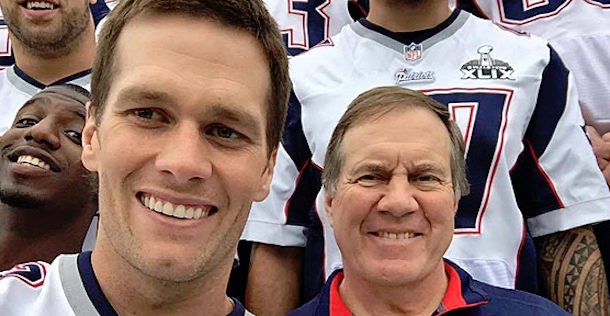Mel Kiper Jr. “Crashed Out” Over Shedeur Sanders Slide in 2025 NFL Draft
The 2025 NFL Draft was full of surprises, but perhaps none...

Bill Belichick has been building a dynasty though third and fourth round picks for over a decade and a half. For all that’s forgotten about the Patriots dynasty, it does need to be noted that they have been this dominant for this long while continuing to draft excellent scheme fits later in the draft for the most part.
The last five first round picks New England had went like this:
2015: Malcolm Brown DT Texas- Starter but has never logged more than 3 sacks in a year, this offseason signed with the Saints
2016: No selection
2017: No selection
2018: Isiah Wynn OT Georgia- season ending injury
2018: Sonny Michel- current starting running back
So they aren’t exactly relying on the first round to get things done.
Here are Belichick’s recent comments on the draft strategy per PFT:
“I would say that, in general, the trades over the last several years for the most part have been, let’s call them within 5 to 10 percent, pretty equitable trades,” Belichick said. “So, for you to have a chart that’s different than the other 31 charts isn’t really that productive because now we’re just arguing about which chart – ‘My chart says this. Your chart says that.’ . . . I would say everybody probably uses about the same value chart. I’d say in our draft trade negotiations through the years, especially the last two or three years, there hasn’t been a lot of, ‘My chart says this. Your chart says that.’ Now 10 or 15 years ago there was some of that. ‘Oh, here’s what we think it should be.’ Well, the other team’s in a different ballpark because they’re looking at a different chart. I would say that when you look at the trades now, over the past few years, a majority of them fall within what we would say is a range of a fair trade. What the going rate would be is what the team gave up and what the team got is about what you would expect them to get, whether it’s our trade or not. I’m just looking league wide. The first round is a little bit different because you’re trading for a very specific player at that point. Not that you’re not trading for a player in the second and third round – I’m not saying that – when a team moves up, they move up to take a certain player that they want. But not everybody’s necessarily after that player, whereas in the first five, 10 picks, whatever it is, when you’re trading there you’re trading for a certain guy and when they trade out of it they know that they’re trading away from that player. It might be one or two players but it’s a much more defined situation.”